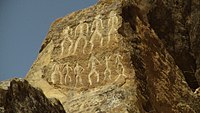Quba Khanate
Quba Khanate خانات قبه | |||||||||
|---|---|---|---|---|---|---|---|---|---|
| 1747–1806 | |||||||||
 Map of Quba Khanate in 1806 (according to a 1902 Russian map) | |||||||||
| Status | Khanate Under Iranian suzerainty[1] | ||||||||
| Capital | Quba (c. 1747–1806) | ||||||||
| Common languages | Persian (official)[2][3] Azerbaijani Lezgian Tat | ||||||||
| History | |||||||||
• Established | 1747 | ||||||||
• Disestablished | 1806 | ||||||||
| |||||||||
| History of Azerbaijan | |
|---|---|
 | |
| c.700 BC–c.590s BC | |
| Achaemenid Empire | 550 BC–330 BC |
| • Satrapy of Media | c.550 BC – 323 BC |
| Seleucid Empire | 312 BC – 63 BC |
| Parthian Empire | 247 BC – AD 224 |
| Caucasian Albania | c.200 BC – c.AD 800 |
| Roman Empire | 27 BC – AD 395 |
